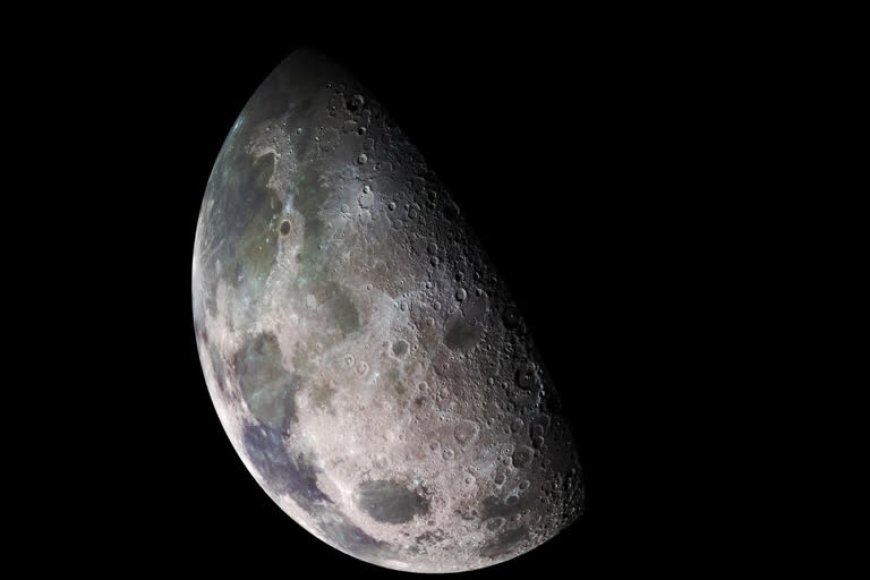Pakistan to Land on Moon by 2035: Planning Minister
Pakistan’s Planning Minister, Ahsan Iqbal, announced the country’s ambitious plan to land a Pakistani lunar rocket on the Moon by 2035. The bold goal stems from renewed government commitment to reclaim scientific leadership through enhanced space exploration.

Pakistan’s Planning Minister, Ahsan Iqbal, announced the country’s ambitious plan to land a Pakistani lunar rocket on the Moon by 2035. The bold goal stems from renewed government commitment to reclaim scientific leadership through enhanced space exploration. Pakistan will participate in China’s International Lunar Research Station (ILRS) initiative and join the Chang’e‑8 mission’s lunar rover deployment in 2028 as a milestone before its soft‑landing objective. The announcement is aligned with Vision 2047, emphasizing space technology to support climate resilience, agriculture, and youth empowerment.
-
2035 Moon Landing Target: Pakistan plans to land a lunar rocket by that year, as confirmed by Ahsan Iqbal.
-
Chang’e 8 Mission Participation: SUPARCO has signed an MoU with CNSA to join the 2028 lunar South Pole mission with its first rover.
-
iCube‑Qamar Mission Success: Pakistani CubeSat deployed aboard Chang’e‑6 in 2024 reached lunar orbit, transmitted images from the far side of the Moon.
-
ILRS Framework 2035: China-led International Lunar Research Station construction is slated between 2026–35, with Pakistan as a partner.
-
SUPARCO’s Vision 2047: Pakistan’s national space roadmap aims for indigenous satellite and exploration rollout by the 2040s.
SUPARCO & Regulatory Framework
SUPARCO leads Pakistan’s national space program. Established in 1961 and reconstituted in 1981, it now oversees the Pakistan Space Activities Regulatory Board (PSARB) to regulate domestic space endeavors under 2024's space-policy reforms.
Vision 2040 & Beyond
SUPARCO’s Space Programme 2040/47 targets the deployment of six LEO satellites, multiple GEO communication satellites, and eventually lunar missions to bolster scientific and economic development.
The 2035 moon landing aspiration is intended to inspire youth towards STEM education and revive Pakistan’s legacy in scientific achievement. It aligns with calls to foster inquiry and innovation among students.
Space technologies supporting glacial monitoring, flood prediction, and land-use data are particularly important following extreme climate events like the 2022 floods.
Participation in ILRS and a national lunar mission can position Pakistan as a respected partner in emerging international space cooperation—especially among Global South nations.
-
Technical & Financial Complexity: Soft-landing on the Moon requires advanced rocket and landing systems—not currently held domestically.
-
Policy Continuity Risk: Historical gaps in funding and direction could imperil long-term program success.
-
Public Priorities Debate: Critics argue that funds may be better allocated to domestic health and development needs rather than high-cost space ventures.
“A moon landing before 2035 would show intent, not just ambition,” tweeted a space analyst regarding the feasibility of Pakistan’s goal.
“This is good to dream but priorities must match reality—many Pakistanis prefer social uplift over space fantasy.”
Pakistan’s stated goal to land on the Moon by 2035 represents a strategic leap in national ambition. Building on its partnership in China’s Chang’e‑8 mission and successful iCube‑Qamar endeavor, the plan realigns the country with its historical roots as an early space pioneer. Success will hinge on consistent policy support, technical capacity building, international partnerships, and public engagement. If achieved, it would mark a transformative milestone in Pakistan’s emergence as a space-faring nation by its centenary year.

 Ateeq Ur Rehman
Ateeq Ur Rehman